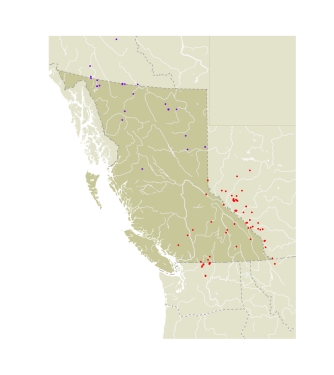The name Pyrgus is derived from the Greek pyrgos, meaning a tower on a wall, a battlement. This presumably refers to the checkered terminal cilia on the edges of the wings (Emmet 1991). The common name "checkered skippers" refers to the "checkerboard" black and white pattern of the wings. Holland (1898) is responsible for the common name of the genus.
This genus is structurally similar to Erynnis and Pholisora, with rounded wing tips, short discal cell, inconspicuous antennal tips, and porrect palpi. The genus Pyrgus is distinguished by the checkered black and white wing pattern, as mentioned above. In England they are
referred to as "grizzled skippers." A closely related genus, Heliopetes, has been recorded from just south of the BC border, in the Washington Okanogan. It has the same black and white colours but they are not arranged in as obvious a checkered pattern. The genus Pyrgus is Holarctic and Neotropical, with at least 19 Palearctic species, 1 Holarctic species, 3 Nearctic species, and 8 Neotropical species. Three species are found in British Columbia. Larval feeding and oviposition have been observed on Potentilla species and various Malvaceae. Evans (1953) provides the only comprehensive review of American species. In our area, examination of genitalia is not necessary to determine species.
|
|
